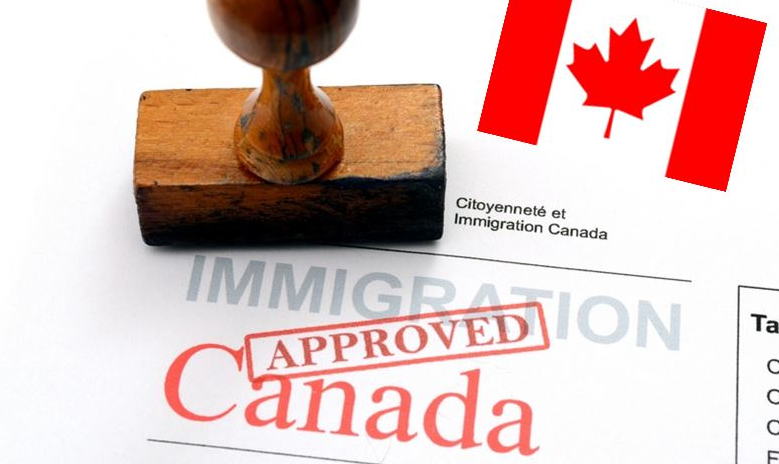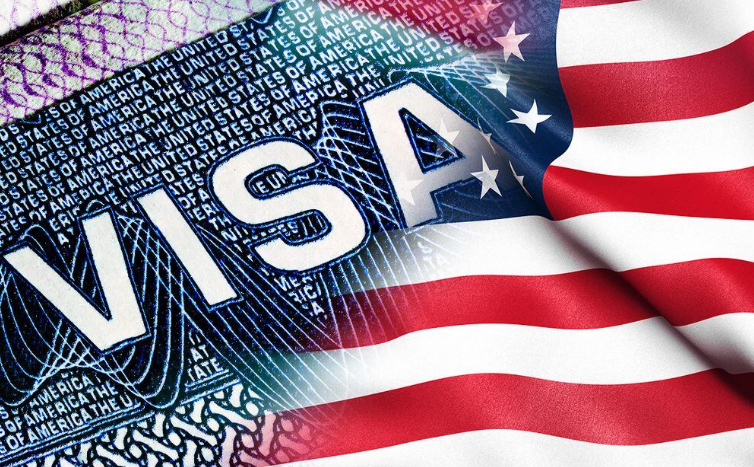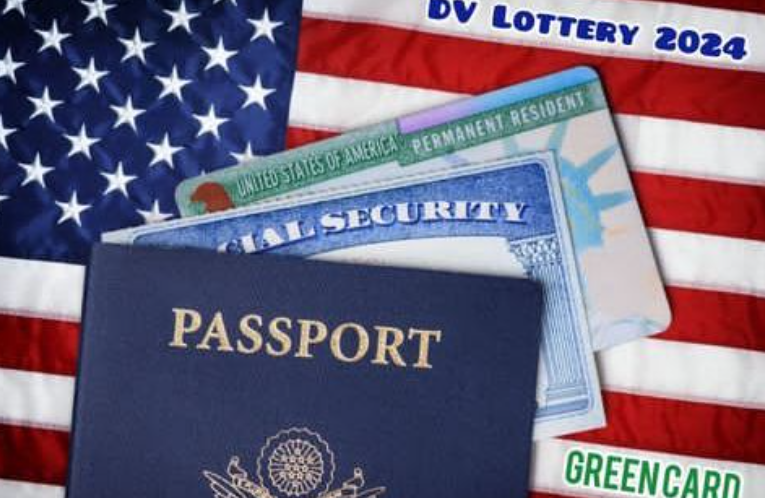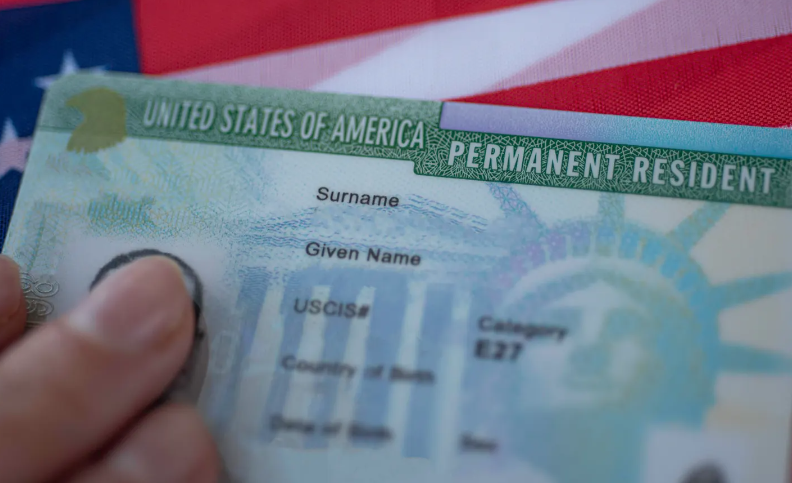Have you ever dreamt of living and working in the land of opportunity – the United States? The U.S. Green Card, also known as a Permanent Resident Card, can make that dream a reality. It unlocks the door to a new life, allowing you to put down roots, pursue your career, and build a future in the U.S.
This comprehensive guide will equip you with the knowledge to navigate the Green Card application process, but remember, the journey is unique for everyone.
American Green Card Application
The American Green Card, also known as a Permanent Resident Card, is a coveted document for many. It grants you permission to live and work permanently in the United States, opening doors to a new life and future. However, the application process can be complex and vary depending on your individual circumstances. This guide will provide a roadmap to navigate the process, but it’s important to remember there is no one-size-fits-all approach.
Eligibility: The First Step
The U.S. Green Card opens a path to a new life in America, but not everyone can walk through that gateway. Understanding your eligibility is the first crucial step in this journey. There are several categories that might grant you Green Card eligibility, each with its own requirements. Here’s a breakdown of some of the most common paths:
- Family Ties: This is a popular route for many. A U.S. citizen spouse, parent (if you’re over 21), adult child, or even sibling can sponsor you. They essentially vouch for you, demonstrating your close family bond and your eligibility for permanent residency.
- Employment Opportunities: Do you possess skills highly sought-after in the U.S. job market? An employer can petition for your Green Card, showcasing how your expertise fills a labor shortage and benefits the U.S. economy. There are various categories within employment-based Green Cards, catering to professionals with exceptional abilities (EB-1), skilled workers (EB-2), or those in specific job sectors (EB-3).
- Diversity Visa Lottery: Feeling lucky? The Diversity Visa Lottery offers a limited number of Green Cards annually through a random selection process. This path is ideal for individuals from countries with historically low immigration rates to the U.S. It’s a chance for a fresh start, but remember, it involves an element of luck.
- Seeking Refuge or Asylum: If you’ve fled persecution in your home country due to race, religion, nationality, political beliefs, or membership in a particular social group, you may be eligible for refugee or asylum status. After residing in the U.S. for at least one year with this status, you can apply for a Green Card.
- Other Avenues: There are other, less common, categories for obtaining a Green Card. These might include being a victim of crime, a religious worker, or a significant investor in the U.S. economy through the EB-5 program.
Don’t see your situation here? Don’t be discouraged. This is not an exhaustive list. It’s always best to research further using the resources mentioned later in this guide. USCIS (U.S. Citizenship and Immigration Services) offers a wealth of information on their website to help you determine your eligibility path.
Gather Your Documentation
The required documents vary depending on your eligibility category. Still, some general documents you might need include:
- Valid passport
- Birth certificate
- Proof of relationship to your sponsor (if applicable)
- Educational credentials
- Employment records
- Medical examination results
- Police certificates from countries you’ve lived in
- Financial documents (for some categories)
Application Process
Understanding your Green Card eligibility is just the first hurdle. The next step is embarking on the application process itself, which can seem like a labyrinth at times. Here, we’ll break down the general stages involved, keeping in mind that the specifics may differ depending on your eligibility category.
1. Petition or Application Filing:
This is where you or your sponsor (if applicable) initiate the process. You’ll need to file the relevant form with USCIS (U.S. Citizenship and Immigration Services). The specific form will depend on your category. Here are some common examples:
- Family-based sponsorship: Form I-130, Petition for Alien Relative.
- Employment-based sponsorship: Form I-140, Immigrant Petition for Alien Worker (various subcategories may require additional forms).
- Other categories: Specific forms apply depending on your situation (e.g., Form I-589 for Asylum).
USCIS offers detailed instructions and downloadable forms on their website.
2. Biometrics Appointment:
Once USCIS accepts your application, they’ll schedule you for a biometrics appointment. This typically involves capturing your fingerprints and photograph for security purposes.
3. The Interview:
An interview with a USCIS officer is a crucial step. This is your chance to present your case and demonstrate your eligibility for the Green Card. Be prepared to answer questions about your application, background, and intentions in the United States.
4. Medical Examination:
You’ll need a medical examination by a doctor authorized by USCIS. This ensures you meet specific health requirements for entry into the U.S.
5. Green Card Issuance:
The final step! Upon successful completion of all stages, USCIS will mail your Green Card, signifying your permanent resident status in the United States.
Remember, this is a simplified overview. Processing times can vary significantly depending on your category and current USCIS workload. Be prepared to wait for an extended period, and some cases might even take years.
Additional Tips:
- Gather Documentation Early: Start collecting the necessary documents as soon as you determine your eligibility. This will save you time and frustration later.
- Consider Legal Counsel: While you can navigate the application process yourself, consulting with an immigration attorney is highly recommended. They can provide invaluable guidance, ensure your application is complete and accurate, and represent you during the interview.
- Stay Informed: USCIS regularly updates its website with the latest information and processing times. Stay updated on any changes that might affect your application.
By following these steps and staying informed, you can significantly increase your chances of navigating the Green Card application process successfully. This will pave the way for you to build a new life and pursue your dreams in the United States.
Important Considerations
- Processing Times: Green Card processing times can vary significantly depending on your category and current USCIS workload. Be prepared to wait for months, or even years, in some cases.
- Legal Counsel: Although you can navigate the application process yourself, consulting with an immigration attorney is highly recommended. They can guide you through the complexities, ensure proper documentation, and represent you during the interview.
- Fees: There are associated fees for filing applications, biometrics, and medical examinations. Ensure you have the necessary funds to cover these costs.
- Staying Informed: USCIS regularly updates its website with the latest information and processing times. Stay updated on changes that may affect your application.
Beyond This Guide
This guide provides a starting point for understanding the Green Card application process. Remember, this is a complex undertaking. Here are some resources for further exploration:
- USCIS Website: https://www.uscis.gov/green-card
- Boundless Immigration: https://visaguide.world/us-visa/green-card/processing-time/
- CitizenPath: https://citizenpath.com/
Frequently Asked Questions (FAQs)
Let’s now take a look at some of the frequently asked questions that people talk about:
Q: How long does the Green Card application process take?
A: Unfortunately, there’s no one-size-fits-all answer. Processing times vary greatly depending on your eligibility category and USCIS workload. You can find current processing time estimates on the USCIS website, but be prepared to wait for months, or even years, in some cases.
Q: Do I need a lawyer to apply for a Green Card?
A: While it’s not mandatory, consulting with an immigration attorney is highly recommended. They can provide invaluable guidance, ensure your application is complete and error-free, represent you during the interview, and advocate for your case.
Q: What happens if my Green Card application is denied?
A: If your application is denied, you will receive a written explanation from USCIS outlining the reasons for the denial. Depending on the reason, you may be able to refile your application or appeal the decision. Consulting with an immigration attorney is crucial in such situations.
Q: What are the fees associated with applying for a Green Card?
A: There are associated fees for filing applications, biometrics appointments, and medical examinations. Ensure you have the necessary funds to cover these costs. USCIS details the current fee structure on their website.
Q: Can I travel outside the U.S. while my Green Card application is pending?
A: Generally, yes, but it’s recommended to consult with an immigration attorney before traveling. Leaving the U.S. during the application process could potentially cause delays or raise questions about your intentions.
Q: What happens after I receive my Green Card?
A: Once you have your Green Card, you are considered a permanent resident of the United States. This allows you to live and work freely in the U.S., travel freely (subject to certain restrictions), and enjoy many of the same benefits as U.S. citizens.
Q: How can I become a U.S. citizen after obtaining a Green Card?
A: After holding your Green Card for a specific period (typically five years for most categories), you can apply for U.S. citizenship through a process called naturalization. This involves meeting additional requirements, passing a citizenship test, and undergoing an interview.
Remember, this FAQ is not a substitute for professional legal advice. For specific questions and personalized guidance, consulting with an immigration attorney is always recommended.
See More and Apply
Conclusion
Remember, this guide cannot guarantee a successful application. It’s crucial to research your specific eligibility category, gather the necessary documentation, and consider seeking legal counsel for personalized guidance. With thorough preparation and perseverance, you can increase your chances of obtaining your American Green Card and pursuing your dreams in the United States.





